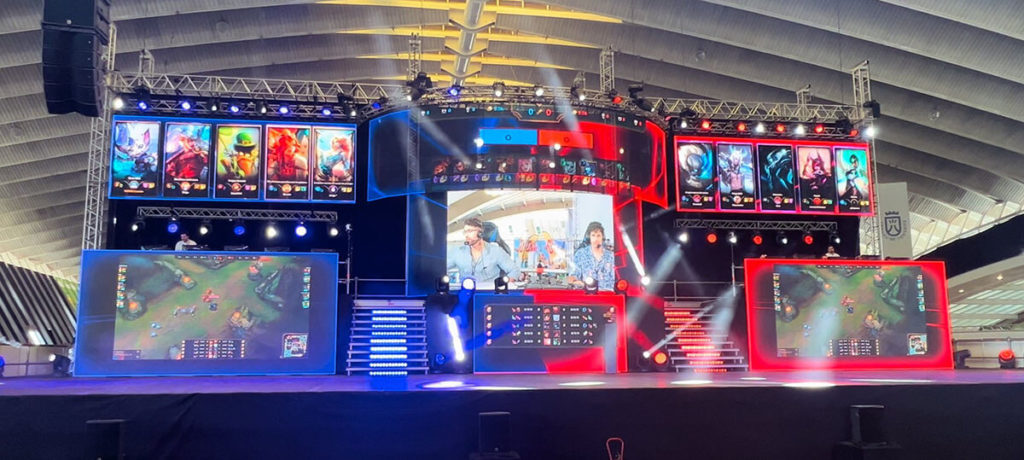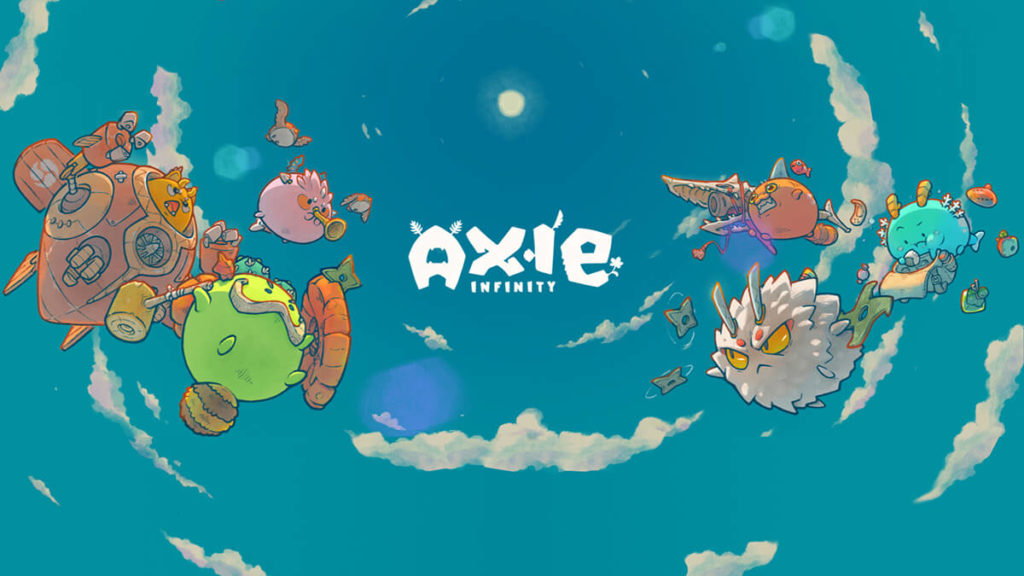Video games are everywhere these days. We’ve come a long way since the dawn of arcade games. Today’s video games are complex and immersive experiences that take us into fantastic worlds, offer exciting gameplay, and tell incredible stories.
But have you ever wondered how these games are created and marketed? That’s where Video Game Publishing comes in. Video game publishers oversee the entire process of bringing games to the market. They handle everything from funding the game’s development, marketing, and distribution, to the legal and financial aspects.
In this article, we’ll
- take a closer look at the world of video game publishing,
- find out what video game publishers do,
- how they make money,
- how they bring their games to the market,
- and the challenges they face,
- take a look at what’s happening in the gaming industry,
- and take a peak at the future of video game publishing.
The Role of Video Game Publishers in the Industry
Video game publishing is the business of taking a video game from development to market. This includes funding, game development, licensing, marketing, and distribution. Publishers are key to bringing games to players. Without publishers, many games would never have hit the market.
Video game publishing has a complicated funding model. Some publishers fund the game development directly and thus earn most of the profits while others fund the game in exchange for a portion of the revenue.
Game development funding is important because creating games can be time-consuming and expensive. Without funding, developers may not be able to create the game they envisioned. Publishers help by providing development funds.
Business Models in Video Game Publishing
There are many business models in the video game publishing industry but only 2 types stand out. These models determine how the game is funded, developed, marketed, and distributed to players.
Video game publishers work with either game developers (an individual who makes games) or a game studio (a company that houses game developers).
Traditional Publishing
Traditional Publishing is the most common business model in the video game industry.
The traditional business model includes the following steps.
- First, publishers provide funding for developers to create games.
- Once the game is complete, the publisher is responsible for marketing the game and distributing it to players.
- Publishers receive a portion of the revenue generated by the games in exchange for their services.
While this model has long been a standard in the video game industry, it is not without its challenges. One of the biggest challenges is the high cost of developing games. Publishers must be willing to invest millions to develop these games. This represents significant financial risk.
List of Traditional Video Game Publishers
| Publisher | Country | Notable Games |
|---|---|---|
| 505 Games | Italy | Control, Terraria, Death Stranding |
| Activision Blizzard | United States | Call of Duty series, World of Warcraft, Overwatch |
| Bandai Namco Entertainment | Japan | Dark Souls series, Tekken series, Dragon Ball games |
| Bethesda Softworks | United States | The Elder Scrolls series, Fallout series |
| Capcom | Japan | Resident Evil series, Monster Hunter series |
| Electronic Arts (EA) | United States | FIFA series, The Sims series, Battlefield series |
| Konami | Japan | Metal Gear series, Silent Hill series, Castlevania |
| Microsoft Studios | United States | Halo series, Forza series, Gears of War series, Minecraft |
| SEGA | Japan | Sonic the Hedgehog series, Total War series, Yakuza series |
| Sony Interactive Entertainment | Japan / United States | God of War, The Last of Us, Uncharted series, Horizon Zero Dawn |
| Square Enix | Japan | Final Fantasy series, Tomb Raider series, Dragon Quest series, Kingdom Hearts series |
| Take-Two Interactive | United States | Grand Theft Auto series, Red Dead Redemption series, BioShock series |
| Ubisoft | France | Assassin’s Creed series, Far Cry series, Tom Clancy’s Rainbow Six series, Tom Clancy’s Ghost Recon series, Just Dance series |
As the gaming industry evolves, so do the methods publishers use to bring games to market. Two of the key changes in recent years are the rise of digital distribution and the use of microtransactions.
Digital distribution has enabled publishers to reach larger audiences and reduce the cost of distributing their games. Instead of physical copies, games can be downloaded directly to player devices, eliminating the need for physical distribution channels.
Digital distribution has led to new forms of video game publishing business models.
Independent (Indie) Publishing
Digital distribution gave rise to Independent (Indie) Publishing. In this model, Indie publishers often work with smaller development teams to focus on niche genres or unique game mechanics. Indie game publishers might be confused with Indie game developers. In fact, they are closely related because Indie game publishers work with Indie game developers and most of the time Indie game publishers were once game developers or were part of a game studio.
Independent game publishers have smaller marketing budgets than larger traditional publishers and may rely on social media and digital marketing strategies to promote their games. Some independent publishers may also partner with traditional publishers to reach a wider audience.
List of Independent Video Game Publishers
| Publisher | Country | Notable Games |
|---|---|---|
| 11 bit studios | Poland | Frostpunk, This War of Mine, Children of Morta |
| CD Projekt Red | Poland | The Witcher series, Cyberpunk 2077 |
| Chucklefish | United Kingdom | Stardew Valley, Risk of Rain 2, Starbound |
| ConcernedApe | United States | Stardew Valley |
| Curve Digital | United Kingdom | Human: Fall Flat, For the King, Narcos: Rise of C |
| Devolver Digital | United States | Hotline Miami series, Enter the Gungeon, My Friend |
| Double Fine Productions | United States | Psychonauts series, Broken Age, Brutal Legend |
| Heart Machine | United States | Hyper Light Drifter |
| Klei Entertainment | Canada | Don’t Starve series, Mark of the Ninja, Oxygen Not |
| Mojang Studios | Sweden | Minecraft |
| Motion Twin | France | Dead Cells |
| No More Robots | United Kingdom | Descenders, Yes, Your Grace, Hypnospace Outlaw |
| Paradox Interactive | Sweden | Crusader Kings II, Europa Universalis IV, Stellaris, Cities: Skylines |
| Raw Fury | Sweden | Dandara, Kingdom Two Crowns, Atomicrops |
| Supergiant Games | United States | Bastion, Transistor, Pyre, Hades |
| Team17 | United Kingdom | Worms series, Overcooked! series, The Escapists series |
| tinyBuild | United States | Hello Neighbor, Graveyard Keeper, Party Hard series |
| Valve Corporation | United States | Half-Life series, Portal series, Left 4 Dead series, Dota 2 |
Self-Publishing
Self-Publishing is another business model that is very similar to Independent Publishing.
With the advent of digital distribution, it became easier for developers to self-publish their games. In the Self-Publishing model, developers are mostly responsible for all aspects of the publishing process such as game development, marketing, and distribution.
A major example of this model is the Steam digital distribution platform by Valve Corporation. Valve Corporation is generally a self-funded company. (The Funding Model will be discussed in the Video Game Publishing Process section.)
Self-publishers commonly have to market and sell their games themselves. They typically use various online platforms and social media channels to reach their target audience and bring buzz to their games. Self-publishers are not backed by traditional publishers, so they need to be creative and tactical in their marketing strategies to effectively promote their games.
Unlike Valve Corporation which is an exclusively self-funded company, most indie game publishers are a mix of partnerships with traditional publishers and self-publishing.
Differences in Video Game Publishing Business Models
Traditional publishers are established companies with sufficient resources to fund game development from start to finish. They take advantage of existing franchises and intellectual property to create new games, usually partnering with external development studios. They have a dedicated marketing team to promote and distribute games to a wide audience.
Independent (Indie) publishers are small companies that work with independent game developers to fund and develop games. They may not have established franchises and are more focused on developing niche games. Independent publishers use digital marketing channels to promote the games.
Self-publishers are individuals or small teams who fund their own game development and have full control over the process while retaining ownership of the game. They may have fewer resources than traditional or independent publishers, but they can release games faster without the need for lengthy approval processes or external funding.
| Traditional Publishing | Independent (Indie) Publishing | Self-Publishing |
|---|---|---|
| A large team of development, marketing, sales, finance, legal and HR departments. | A small team with core roles in development, production, marketing and sales. | An individual or small team of developers who handle all aspects of game development, marketing, and sales. |
| Often works with external development studios or developers to create games. | They can work with both independent game developers and traditional publishers. | The developer or team has full control over the development process and retains full ownership of the game. |
| Has a marketing and PR team dedicated to promoting and distributing the game. | Often focused on developing niche games that appeal to specific audiences, relies heavily on social media and digital marketing channels. | Has to be creative and strategic in marketing efforts to effectively promote the game without the support of a traditional publisher marketing team. |
Licensing Agreements
Another way publishers and developers bring games to the market is via Licensing Agreements. Publishers can use licensing agreements to bring developer games to the market. They work with the developers or even fellow publishers who created the games and distribute them for a chunk of the earnings. This is a win-win because developers can bring their games to more people and publishers can add new games to their portfolios.
One example of this is the agreement between Activision and Bungie for the game Destiny. A partnership that eventually soured.
More examples
- Electronic Arts (EA) has licensing agreements with the National Football League (NFL) and NFL Players Association to use teams, players, and stadiums in the Madden NFL video game series.
- Activision has a licensing agreement with the Call of Duty Endowment, a non-profit organization that helps veterans find quality jobs after leaving the military. As part of the deal, Activision will donate a portion of the sale of certain Call of Duty games to the foundation.
- Square Enix has a licensing agreement with Marvel to create and publish video games based on Marvel’s popular comic book characters.
- Ubisoft has a licensing agreement with Tom Clancy, author of famous military and spy novels. Ubisoft is using Clancy’s name and works to sell the Tom Clancy video game series, which includes titles like Ghost Recon and Rainbow Six.
Licensing Agreements of Some Video Game Publishers
| Electronic Arts (EA) |
| National Football League (NFL) National Basketball Association (NBA) |
| Activision Blizzard |
| Call of Duty World of Warcraft Diablo |
| Square Enix |
| Marvel Comics Disney |
| Ubisoft |
| South Park Digital Studios |
| Konami |
| Union of European Football Associations (UEFA) Brazilian Football Confederation |
How Do Video Game Publishers Earn?
Video game publishers generate revenue in the following ways:
- Game sales: The most common way for game publishers to make money is by selling the games, in the form of physical copies such as discs and cartridges, or digital downloads through online marketplaces such as Steam or PlayStation Store.
- DLC: Downloadable content is also one popular way for game publishers to generate revenue. DLC may include purchasing additional levels, characters, items, or other features available to players after the game’s initial release.
- Microtransactions: Microtransactions are small in-game purchases, usually for virtual items or currency. These can include cosmetic items, experience boosts, and in-game currency that can be used to purchase other items.
- Microtransactions or in-game purchases have become an important source of revenue for publishers. Players can purchase virtual merchandise and upgrades with real money, allowing publishers to generate more revenue over time.
- However, the use of microtransactions is also controversial, especially with Gacha transactions. It has been criticized for its potential to encourage addictive behavior, create an uneven playing field, and exploit vulnerable or underage players who may not fully understand the value of their purchases. Some players believe Gacha microtransactions are a form of gambling which is true in a way.
- Advertisements: Some games may contain advertising which could generate revenue for the publisher. This may include ads that play before the game starts and in-game ads that appear during gameplay.
- Licensing: Publishers can also generate revenue through licensing agreements that allow other companies to use their games and characters in merchandise, movies, or other media.
While the big picture of video game publishing may sound simple, the overall process is a lot more complicated.
The Video Game Publishing Process
Game Funding and Investment
The first step in the video game publishing process is funding support. Developing high-quality video games requires large amounts of funds from various publishers, investors, or crowdfunding entities.
Types of funding in video game publishing include
- Publisher funding: This is when a publisher funds the development of a game, usually in exchange for the right to publish the game.
- Crowdfunding: When the game is funded through platforms such as Kickstarter. Fans can donate funds for the game’s development in exchange for rewards such as early access, exclusive in-game items, and other perks.
- Self-funding: This is when developers fund the development of their own games with their own money or resources.
- Venture capital funding: When a game developer receives funding from a venture capital firm to develop a game in exchange for equity in the company.
- Angel investors: This is when a game developer receives funding from private investors to develop the game in exchange for a portion of the profits.
- Government funding: In some countries, governments can fund video game development through grants or tax incentives.
List of Investors, Crowdfunding, and Government Entities That Support the Video Game Industry
| Investor/Crowdfunding Platform/Government | Type of Support |
|---|---|
| Accel Partners | Investor |
| Amazon | Investor |
| Andreessen Horowitz | Investor |
| Australian Interactive Games Fund | Government |
| Canada Media Fund | Government |
| Centre national du cinéma et de l’image animée (CNC) | Government |
| Creative Europe | Government |
| Crowdcube | Crowdfunding |
| Fig.co | Crowdfunding |
| German Federal Film Fund (DFFF) | Government |
| Google Ventures | Investor |
| IndieGoGo | Crowdfunding |
| Intel | Investor |
| Kickstarter | Crowdfunding |
| Microsoft Ventures | Investor |
| Nintendo | Investor |
| Patreon | Crowdfunding |
| PlayStation® Partners | Investor |
| Samsung | Investor |
| SEGA® Europe Ltd. | Investor |
| Sequoia Capital | Investor |
| Sony Corporation | Investor |
| Square Enix Ltd. | Investor |
| Tencent | Investor |
| UK Games Fund | Government |
| UK Video Games Tax Relief Program | Government |
| United States National Endowment for the Arts | Government |
| US Small Business Administration | Government |
Gaming Platform Consideration
The type of gaming platform is sometimes also considered at the funding stage. This is especially true when developers seek funding from specialized publishers or investors who are part of a particular platform.
- Personal Computers (PCs)
- Game Consoles – PlayStation, Xbox, and Nintendo Switch
- Mobile Phones and Tablet Devices
- Virtual Reality (VR) Devices – Oculus Quest and HTC Vive
- Handheld Consoles – Nintendo 3DS and PlayStation Vita
But it is also possible to fund without considering the platform, particularly for multi-platform games or if the final platform has not yet been determined.
Game Development
Once funding is secured, the development process will begin. This includes creating game concepts, designing characters and environments, and implementing complex game mechanics that make the game unique.
Game Marketing and Promotion
After the game is developed, it needs to be marketed and promoted to attract consumers. Marketing is a key component of the video game publishing process as it determines how well the game performs in the market. Video game publishers employ a variety of marketing tactics, including social media advertising, influencer marketing, and targeted advertising. Promotion includes presenting the game at events and conventions to generate buzz and attract the attention of potential consumers.
Game Distribution
Next is distribution. Once the game is developed, it needs to be distributed to the target audience. Video game publishers can use different distribution models like physical copies, digital downloads, or a combination of both. Digital distribution models have gained popularity in recent years as they offer convenience to consumers and eliminate the need for physical storage.
Digital distribution of games include
- Direct download: This is the simplest form of digital distribution, where the game is downloaded directly from the developer’s website or a platform like Steam.
- Cloud gaming: This involves streaming the game to the player’s device from a remote server, eliminating the need for a local download or installation.
- Subscription services: Players pay a recurring fee for access to a library of games, which are typically streamed or downloaded through a dedicated app or platform.
Gaming Laws and Regulations
Legal aspects are also an important part of the video game publishing process. Developers must ensure that their games comply with copyright laws, licensing agreements, and regulations to avoid legal issues.
Following is a list of entities that check the legal aspects of video games
- Entertainment Software Rating Board (ESRB) – a self-regulatory organization that assigns age and content ratings to video games in North America.
- Pan European Game Information (PEGI) – a European rating system for video game content.
- International Age Rating Coalition (IARC) – a global initiative that provides a streamlined process for evaluating digital games and apps.
- National Media Council (NMC) – responsible for media content regulation in the United Arab Emirates.
- China Audio-Video and Digital Publishing Association (CADPA) – responsible for video game regulation in China.
- Bundesprüfstelle für jugendgefährdende Medien (BPjM) (Federal Department for Media Harmful to Young Persons) – responsible for maintaining the list of video games harmful to German youth.
- Australian Classification Board (ACB) – responsible for classifying video games in Australia based on their content.
- Korea Media Rating Board (KMRB) – responsible for rating and classifying video games in South Korea.
- Computer Entertainment Rating Organization (CERO) – a video game content rating system in Japan.
Risks and Challenges in Video Game Publishing
Video game publishing can be an exciting and lucrative industry, but it is not without risks and challenges. Whether you’re a small indie developer or a large publisher, there are always hurdles to overcome and potential pitfalls to avoid.
One of the biggest risks in video game publishing is financial. Video game development can be an expensive process, and there is no guarantee that the game will be commercially successful. In fact, most games are not profitable, and even successful games might not recoup all their development costs. This risk can be particularly daunting for independent developers who may not have the financial resources to survive a flop.
Another risk associated with video game publishing is the development and release of the game. Creating a video game is a complex and time-consuming process involving many moving parts. Game developers need to create compelling narratives, complex game mechanics, and captivating visuals to stand out in an increasingly crowded marketplace. They also need to make sure the game is optimized for different platforms and devices, which can be a significant technical challenge.
Marketing and advertising are also important parts of video game publishing and can be a challenge for developers who do not have the resources or expertise to effectively promote the games. Publishers, on the one hand, have greater reach and budgets to invest in marketing campaigns but can face challenges when it comes to getting the games to the right audience.
Another big challenge in releasing a video game is the legal aspects. Developers must ensure that they have the necessary licenses and permissions in place to use Third-Party Content in their games. They also have to manage complex legal agreements with publishers, distributors, and other stakeholders involved in the game development process. Not to mention local and international regulations.
In addition to these challenges, there are also broader industry trends and market shifts that can impact video game publishing. For example, the rise of mobile games and free-to-play models has disrupted the traditional business model of selling games. The growing popularity of virtual and augmented reality technologies is also changing how games are developed and played.
Video Game Publishing Trends and Future Outlook
One of the key trends in video game publishing is the increasing emphasis on immersive experiences. Games are no longer just about game mechanics and stunning graphics. It’s about creating an experience that completely engages the player.
The video game industry’s use of virtual and augmented reality technology is increasing. These technologies have the potential to revolutionize the gaming industry and provide players with a better and more advanced gaming experience. As these technologies continue to evolve and become more accessible, we can expect to see more games with virtual and augmented reality features.

The rise of mobile has also changed video game publishing. With the spread of smartphones and tablets, mobile gaming has become a huge industry. Mobile games represent a significant portion of today’s video game market, and many game publishers are shifting their focus to developing games for mobile devices. Some publishers are taking a mobile-first, PC-second approach. Some serve both platforms at the same time.

There are some exciting developments on the horizon when it comes to the future of video game publishing.
One of the most important is the continued growth of esports. Esports refers to competitive games in which players compete against each other in organized tournaments. The popularity of esports has exploded in recent years, spawning many professional esports teams and leagues. As the esports community continues to grow, we can expect more investments from video game publishers in this area.

The increasing use of blockchain technology, or, broadly speaking, cryptocurrencies is another development in the gaming industry. Blockchain technology has revolutionized gaming by enabling in-game economies and reward systems. This allows players to get real-world value for their in-game achievements. Although the integration of blockchain technology into games is currently on the decline, it is clear that there is an exciting future for blockchain and video games.

Video Game Publishing Trends and Outlook
| Trends | Future Outlook |
|---|---|
| Blockchain technology | Games may adopt blockchain technology, allowing for more secure and transparent in-game transactions and ownership |
| Cloud gaming | Increased adoption of cloud gaming makes gaming more accessible and convenient |
| Cross-platform play | Focus on cross-platform play, allowing players to play together regardless of platform |
| Esports | Continued growth in esports with increased Investment and sponsorship opportunities |
| Mobile gaming | Continued growth in mobile gaming due to increased smartphone usage |
| Virtual and augmented reality | Increased adoption of virtual and augmented reality in games provides players with immersive experiences |
The Future of Video Game Publishing Is Bright
Video game publishers play a critical role in the industry, helping to bring great games to the market and making sure that gamers can access a range of experiences. The business of video game publishing can be complex and there are various challenges and trends that publishers need to keep up with to be successful.
Despite these challenges, the industry continues to grow and evolve. With the advent of new technologies and platforms, publishers and developers are finding innovative ways to create immersive and compelling stories that capture the attention of gamers around the world. Staying abreast of trends and being willing to take calculated risks helps video game publishers meet industry challenges and thrive in an ever-changing environment.
The rise of mobile gaming and the adoption of virtual and augmented reality technologies are just a few of the trends shaping the industry. The outlook for video game publishing is bright, with exciting developments such as esports and the use of blockchain technology.
As the Video Game Publishing industry progresses, more innovations will continue to provide players with unforgettable experiences and we can expect more attractive games in the future.
Sources
2021, M. W. T. 6. (2022, December 7). Global Games Market to Generate $175.8 Billion in 2021; Despite a Slight Decline, the Market Is on Track to Surpass $200 Billion in 2023. Newzoo. Link
Almér, E., & Eriksson, G. (2019, January 17). Understanding the business model in the video game industry – a case study on an independent video game developer. diva-portal.org. Retrieved February 19, 2023, from Link
Bach, T. (2018, October 9). eSports takes another step towards mainstream. olympics.com. Retrieved February 23, 2023, from Link
Cole, B. (2023, January 6). The Ultimate Guide to Indie Game Publishers. Bit by Bit Sound. Link
Game Marketing Genie. (2020, July 23). The Ultimate Guide to Game Marketing: Everything You Need to Know. Link
Gennaro Cuofano. (2022, September 5). Understanding The Gaming Industry And Its Business Models – FourWeekMBA. FourWeekMBA. Link
Gibson, E., Griffiths, M. D., Calado, F., & Harris, A. (2022). The relationship between videogame micro-transactions and problem gaming and gambling: A systematic review. Computers in Human Behavior, 131, 107219. Link
How the Video Game Industry Is Changing. (2021, October 31). Investopedia. Link
IGDA – International Game Developers Association. (n.d.). Link
Indie vs Game Publisher: Do Game Developers Need Publishers. (2022, August 30). GetSocial. Link
Innovecs. (2022, November 24). 5 Essential Stages of Game Development Process. Link
Managing Risk in Video Game Development. (2013, May 3). Game Developer. Link
Newzoo. (2022, December 8). Global Games Market Report 2020 | Light Version. Link
Palermo, F. (2021, July 20). Time To Get Your Game On: The Future Of Online Gaming. Forbes. Link
PGC Digital: Publisher or self-publish? (2021, April 20). pocketgamer.biz. Link
Research, H. (2022, April 25). THE FUTURE OF BLOCKCHAIN GAMES: AN IN-DEPTH ANALYSIS. Medium. Link
Self Publishing vs Working with a Publisher (KS Lesson #275). (2022, December 25). Stonemaier Games. Link
Understanding the Legal Impact of Publishing Your Game. (2012, May 8). Game Developer. Link
Vicente, V. (2020, March 12). What Exactly Is a “Gacha” Video Game? How-To Geek. Link
Video Game Development Process: A Step-by-Step Guide. (n.d.). Link
Wikipedia contributors. (2023, February 10). Video game publisher. Wikipedia. Link












